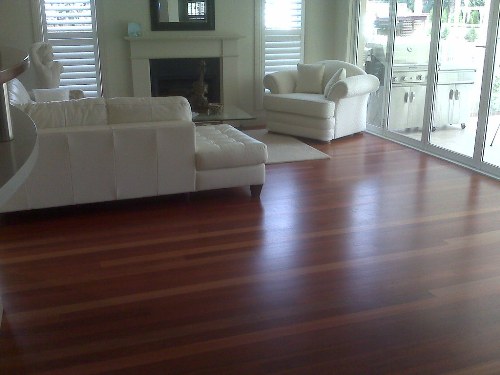Hardwood floors always give us a warm, cosy feeling, and we love them more than any other flooring. However, they are not so easy to take care of: problems start to emerge after a while.
Some problems are easy to solve; others are not. In the worst-case scenario, the condition of the planks could get so bad that we would have to replace them.
You should repair your floor as soon as possible because maintenance costs are high. Despite that, there will come a time when you cannot save your hardwood floors. So when are hardwood floors beyond repair? Let’s scroll down for the answer.

Table of Contents
When Are Hardwood Floors Beyond Repair?
Pests and Bugs
Have you ever seen bugs or pests coming out from your flooring? It is disturbing to witness little pests crawling on the floor when you cannot figure out where they come from.
Unlike other situations in the first section, you need to replace your wooden floors because repairing does not work. Yes, we tried everything we could to get rid of the bugs, but they would come back every time.
The reason for this is that their eggs are already on the floors. No matter how hard you try to get rid of the bugs, their eggs would still be somewhere in the cracks. In the end, you will need to replace the whole flooring.

You Have Refinished Them Many Times Before
Wooden flooring is thick, but after fixing and sanding, it will eventually become thin, and the quality will reduce.
Once the wooden planks become fragile, any more repairs might cause them to crack. In this case, it is better to replace the flooring altogether.
Serious Water Damage
High-quality wooden flooring can resist water easily, and you can wet clean it without any problem. However, in case of serious water damage, you still need to replace your floors.
The most common reasons for severely damaged floors are floods and harsh weather. If your floors cannot become completely dry after the water damage, consider changing the whole flooring or at least call a professional and ask for their advice.

Big Scratches
Daily household activities, such as people moving chairs and pets running around, can leave scratches on the floors. If the scratches are minor, you do not have to replace the whole flooring. However, when there are really big scratches, you should change the damaged ones with new planks.
Unlike smaller scratches, big scratches can absorb a lot of water. When you accidentally spill your drink on the floor, the water can sink deep into the core of the wood, causing lots of damage to the scratched planks and their surrounding area.
Nails
Under the effect of humidity and temperature, hardwood floorboards can shift, expand, and contrast. These movements will eventually loosen the nails holding the boards down and cause the nails to pop up on the surface.
Yes, maybe a few nails in the corner will not bother you, but you should replace the whole floor to protect your bare feet if the amount becomes overwhelming.
When Do You Only Need to Repair Your Hardwood Floors?
There Are Gaps Between The Wooden Boards’ Planks
Wooden furniture is vulnerable to humidity, moisture levels, and harsh weather, and our hardwood flooring is no exception. Cleaning, if done incorrectly, can also do damage and expand the gaps between the boards.
Fortunately, gaps are easy to repair. But since they can appear for a variety of reasons, you should identify and fix the cause of the gaps to prevent them from reappearing in the future.
The Wood Is Cracking
Wood can lose its natural oil and moisture when it gets too old, and the lack of oil and moisture can result in the wooden boards splitting or cracking. In this case, you don’t need to replace the whole board unless it is cracked and split down.
The Flooring Is Cupped
The lack of moisture can cause cupping (the planks’ edge rises and forms a cup shape on the plank). The key solution, in this case, is to maintain a balanced moisture level for your wooden boards during and after fixing.
The Planks Has Warped
Many people think the flooring needs to be replaced once its planks have warped and pulled up from their subfloor. But we can still repair it if we know the real cause of its warping.
Sometimes, the planks warp because of installation problems. To fix it, you will need to either call a professional or figure out why the planks warp and fix the problem.
Conclusion
Hardwood flooring looks charming and gives a good feel for your feet, but issues are inevitable, and once they come up, you will have to either fix them or say farewell to your beloved flooring.
Most of the time, repairing is enough, but we need to replace the whole plank or even the entire flooring when there are serious problems. So, when are hardwood floors beyond repair? We hope you can tell which situation requires repairing and which situation necessitates replacement altogether with the tips mentioned above.
Thanks for reading our post.
Related Post:
- Olive Oil On Hardwood Floors – A Secret For Beautiful Floors
- Step-by-step Guide On How To Hand Scrape Wood Floors
- How To Clean Unfinished Wood Floors (The Secret in The 2nd Section)
- Can You Use Bona Hardwood Floor Cleaner On Laminate?

